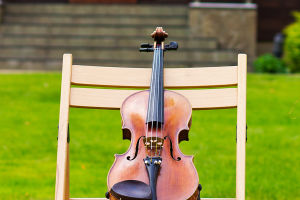What are the differences and connections between classical and modern pianos?
Before distinguishing between classical and modern pianos, we need to be aware of the differences between classical and modern music.
In the history of Western music, classical music is generally counted from the Baroque period.
There are many schools of classical music, starting with Bach, of which Beethoven is the main one, and the Romantic school, with Chopin as the mainstay, followed by the Impressionist school, with Debussy as the representative.
Modern music, on the other hand, is dominated by today's popular music.
Construction-wise, modern pianos are divided into two types, which are historical and grand platform styles.
The basic configuration of the modern piano is 88 keys and three pedals, while the very first piano had only 60 keys.
During the Baroque period, classical pianos were required to be played strictly according to sheet music, which was based on classical pieces of piano music, and the rhythm could not be changed easily.
The music was very elegant and required a certain level of literacy and education to truly appreciate and understand.
Modern piano, on the other hand, has evolved from a lighter, jazzy style, where the melodies are more dynamic and the rhythms can be played freely.
However, nowadays popular piano still needs a certain music theory foundation, and when you start practicing, you still need to use classical music exercises as the basic training.
In terms of playing method, the structure of the classical piano and the principle of sound generation are different from that of modern pianos.
Classical pianos have limited strength, so the keys are shallow and light, the sound is more crisp, and the musical expression is not as rich as that of modern pianos, which is relatively homogenous.
So when Liszt played passionately in that period, it was possible to break three or four pianos in one performance.
In terms of performance, classical piano mostly focuses on finger movements, and the force is limited to the area below the palm.
The force is even more concentrated on the muscles of the back and then on the fingertips.
Modern pianos, because of technological improvements, the sound of the piano should be more melodious and atmospheric, and pay more attention to the sound quality of the switch and mobility.
The force no longer needs to be so strong, the wrist-appropriate force is enough.
As a matter of fact, with the progress of time, the piano nowadays has been greatly improved compared to the previous modern pianos.


